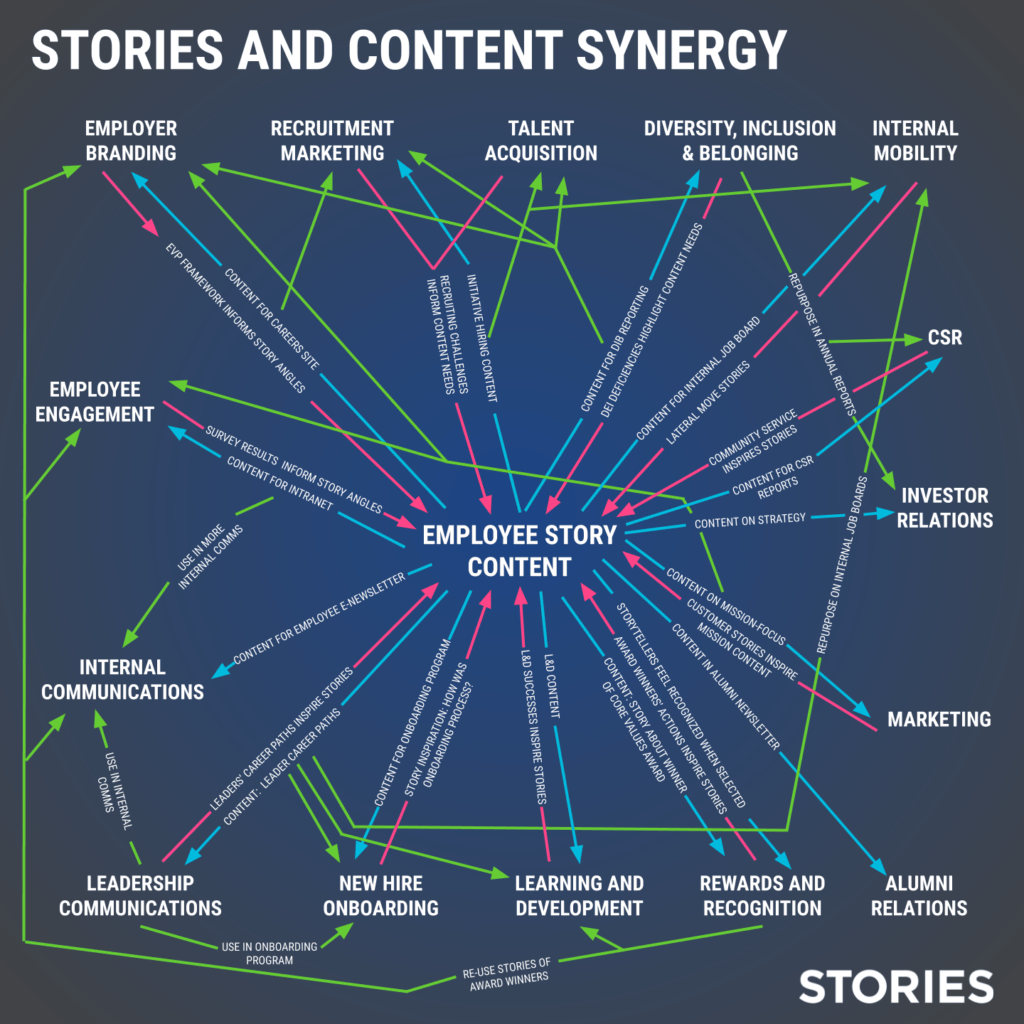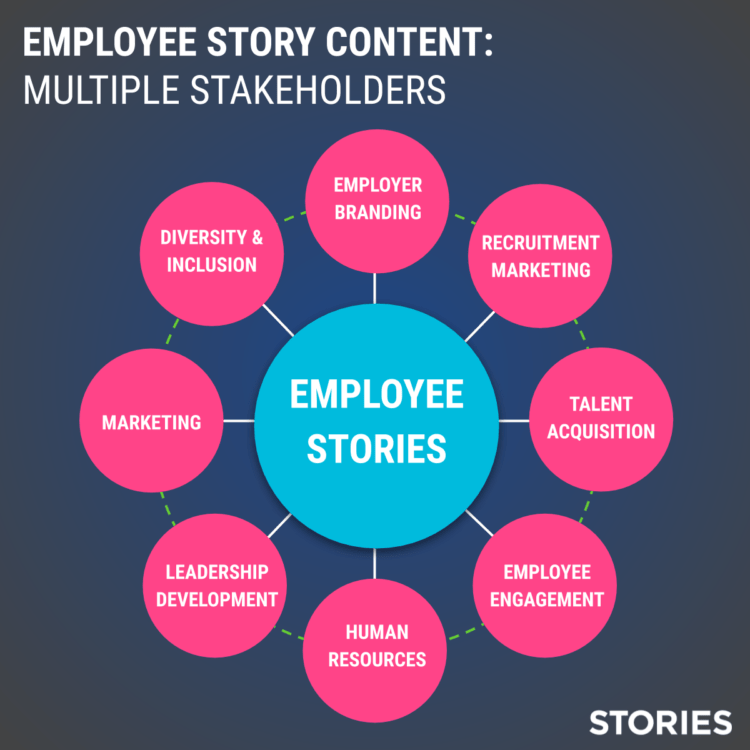The ROI of employer branding (and a calculator!)
The ROI of employer branding is the story of what happened to the money spent to solve an employer branding problem and how employer brand awareness and recruiting were impacted. Learn how to measure it in this excerpt from our ebook, Getting Buy-In for Your Employee Story Project, The Ultimate Guide to Employer Branding and Recruitment Marketing ROI.
Return on Investment (ROI) is a performance measure used to evaluate the efficiency or profitability of the money you’ve spent or the asset you bought. It’s calculated by using the return divided by its cost to equal a percentage.
(Final Value of Investment – Initial Value of Investment) ÷ Cost of Investment x 100% = ROI
When projecting the ROI of a purchase, it answers the question, “If we make this investment, what will happen? How will the value of whatever we’re investing in increase?”
ROI of employer branding
To frame this for employer branding and recruitment marketing, your return on investment uses hard numbers to tell the story of what happened to the money you spent to solve a problem related to employer brand awareness and/or recruiting.
With a finite amount of capital to allocate across an entire organization, leadership directs excess funds toward the initiatives that have a higher ROI. If you’re an employer brand and recruitment marketing practitioner, using ROI will help you make a powerful case for receiving budget to execute on your ideas.
An ROI example
Let’s say you’re trying to convince leadership to allocate $100,000 of budget for an employee story content project you’re considering. Therefore, the $100,000 cost will go into two spots of the ROI equation:
(Final Value of Investment – $100,000) ÷ $100,000 x 100 = ROI
Based on the equation, the higher the “Final Value of Investment” number, the higher the ROI. In fact, that number will include all the positive impacts that result from the employee story content project: decreased turnover, decreased time to fill, increased offer acceptance rate, decreased cost per hire, etc.
Here, we’ve emphasized “at least” because in adding up the impact of the story content project, we only included the easily quantifiable metrics. However, the number doesn’t include the harder-to-quantify impact of your work (e.g., increased employee engagement). And, it doesn’t add up the benefits your efforts provide other departments, thanks to the repurposability of the content you created.
ROI of employee stories
Creating recruitment marketing and employer branding content based on employee stories is a good place to start for a win. In fact, it’s an especially smart move on your first effort, while you’re still establishing trust with leadership.
And, it’s an easy decision because all the ways you could start, lead to employee stories. Employee story content fuels everything you’re trying to do in employer branding and recruitment marketing. You’re going to need recruitment marketing content no matter what, eventually.
Want to capture stories & bring your culture to life?
Get the most ROI out of an employee story project
Each time you use an employee story in your library, it’s an opportunity to create additional value. The more you use it, and the more creative ways you can produce results, the greater the total return.
As the equations above show, any additional way your employee story content gets used — on top of what you originally envisioned — will increase the “Final Value of Investment” part of the equation and, thus, increase your ROI.
Here are ways to maximize the use of your employee story library and, therefore, increase the ROI of building out your employee story library.
See stories as a solution for everyone
We mentioned how different departments can use employee story content to advance their own goals. This will matter to leadership, whose view can be zoomed out on the total company, or their division of communications, human resources, recruiting, or diversity and inclusion. And, it matters to you because you are trying to get the most out of your investment. Every time your content is used, it has an opportunity to add to its return.
For example, is the Investor Relations department able to use a piece of your employee story content for their annual report? You saved them the cost of producing content for themselves, so add it to the “Final Value of Investment” part of the equation (and watch as the ROI number increases!).
Thinking about the content project more, you realize that without spending additional funds, you can also uncover stories of women engineers. Women engineers are in high demand, so your cost-to-hire of those individuals is probably very high. If your idea to uncover those stories could bring down cost-to-hire of women engineers, that’s another “value add” that can be added to the ROI equation.
Each department can reuse your content to their advantage. Here are a variety of ways your employee stories can serve other areas of your company.

Get our ROI calculator spreadsheets & more assets in our ebook
Our ebook has all the tools to communicate the ROI of the employee story projects and execute the recruitment marketing video plan that’s essential to your success. Plus, inside you’ll find special resources for communicating your needs and making a case for your project, like our custom ROI calculators, spreadsheets and presentation deck template for presenting to leadership.


